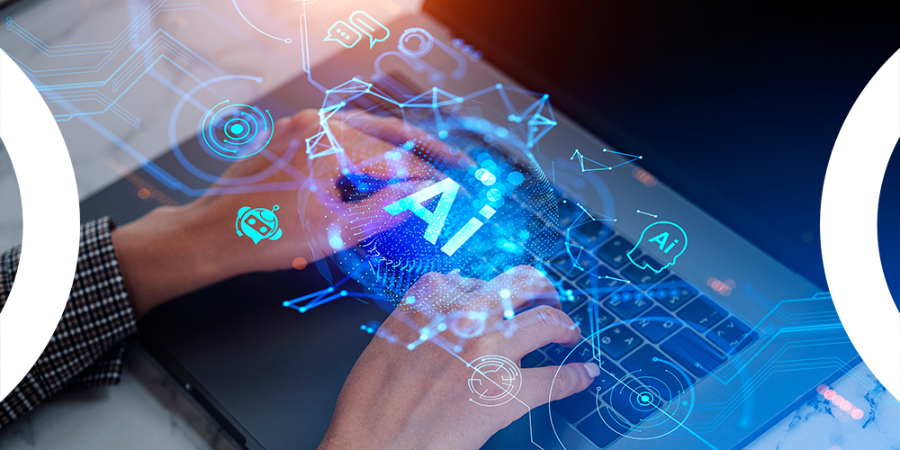Make generative AI available to the public as a digital asset
The revolutionary technology of Generative Artificial Intelligence (GenAI) has caused a global sensation, propelling ChatGPT to an astounding 100 million subscribers within an incredibly short span of two months. The cutting-edge Large Language Models (LLMs) that drive GenAI hold immense potential to reshape the very fabric of human existence. Nevertheless, amidst this enthusiasm, concerns arise regarding potential job displacement, diminished human control, as well as apprehensions about bias, ecological impact, plagiarism, and even the integrity of democratic systems.
Ongoing are the dynamic conversations regarding the integration of generative AI in different sectors and functions. The importance of accountability and ethics has brought to light the government’s pivotal role in this matter. In essence, the government bears a dual responsibility: firstly, as an authoritative entity to set forth regulations for responsible AI, and secondly, to adopt it for its transformative purposes.
Governments worldwide are showing increasing concern over the significant impact and rapid advancement of generative AI applications. These applications possess the ability to generate various forms of output, such as videos, texts, codes, and more, by leveraging the vast amount of data available on the internet. However, there are potential risks associated with generative AI, including the production of inaccurate content due to biased models, the potential loss of control over personal data, and the emergence of fake identities for deceptive purposes. Consequently, policymakers must remain vigilant and continuously refine their policies to effectively address the risks that arise from generative AI models in the public domain.
Governments must establish clear directives to tackle concerns related to accountability, privacy, and biases. Generative AI systems must adhere strictly to these frameworks, and it is vital to select partners and developers who are dedicated to upholding such principles. These stakeholders should be willing to disclose the foundations of their algorithmic models and the data sources utilized for generative AI applications. The recently introduced data privacy legislation by the Indian government is anticipated to provide a certain level of protection to citizens in terms of the usage and storage of personal data. Nevertheless, further measures need to be devised to minimize privacy risks.
Generative AI presents a significant opportunity for governments seeking to address the numerous challenges faced by their citizens. The limitations encountered by governments in delivering sufficient attention and services to all sectors of society serve as the driving force behind the adoption of generative AI in the public sector. Given that governments generate vast amounts of data, leveraging generative AI can enable them to extract valuable insights to inform decision-making on matters about the welfare of the public.
Governments have the potential to streamline the resolution process by automating repetitive tasks and offering self-service assistance to both citizens and employees. This would allow for the swift resolution of commonly recurring issues. Additionally, complex legal documents can be transformed into easily understandable formats by utilizing interactive components of generative AI. This way, various stakeholders can access and comprehend such documents more efficiently. Furthermore, generative AI can play a vital role in disaster management, fraud prevention, identification of potential tax evasion, and enhancing emergency preparedness. By analyzing trends and patterns within vast amounts of data, generative AI can provide valuable insights for these purposes.
Given that generative AI is still in its early stages, it is possible that the general public may not have a clear understanding of the concept and the potential consequences it may bring. Therefore, it becomes crucial for the government to take on the responsibility of raising public awareness. By doing so, citizens can become more informed about how these systems will affect them in the future.
In the real world, one of the best applications in GenAI is in the Software and coding Area. Yes, Nowadays all the software industry are using GenAI to transform the software development and coding landscape through innovative solutions that streamline coding. Hence, software and coding have quickly become one of the most prominent use cases of generative AI, as its applications hold the potential to improve code quality, enhance productivity, and even spark new software innovation avenues.
Here’s how applications of generative AI are impacting software and coding:
Code generation – Generative AI has found a significant application in software development, particularly in the field of code generation. By training AI models on extensive collections of existing code, these models are capable of generating code functions, snippets, or even complete programs based on specific requirements. The utilization of generative AI for code generation proves to be highly beneficial in expediting software development processes by automating repetitive coding tasks. Consequently, developers can allocate their time and efforts towards problem-solving and higher-level design aspects.
Code completion – Generative AI has the potential to enhance coding efficiency through its intelligent code completion and suggestion capabilities. By utilizing generative AI models, integrated development environments (IDEs) can anticipate and propose future lines of code that developers might write, taking into account the context. This not only accelerates the coding process but also minimizes the likelihood of errors.
Natural language interfaces for coding – Generative AI also enables natural language interfaces to code, allowing a developer to interact with software systems through human language instead of programming languages. Many organizations implement this through generative AI applications to bridge the gap between domain experts and developers. In turn, this helps to save resources on hiring experts to tackle software systems, by simply letting developers do it.
Automated testing – Generative AI-driven tools can automate the process of generating test cases and scenarios, which is typically a time-consuming task in software development. These tools analyze the code and its potential execution paths to create extensive test suites. As a result, they improve code coverage and enable developers to detect potential bottlenecks at an early stage.
Source

